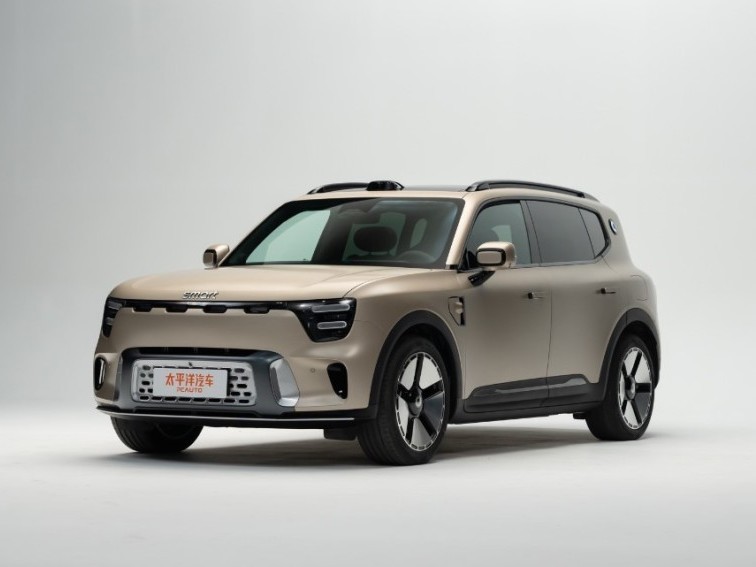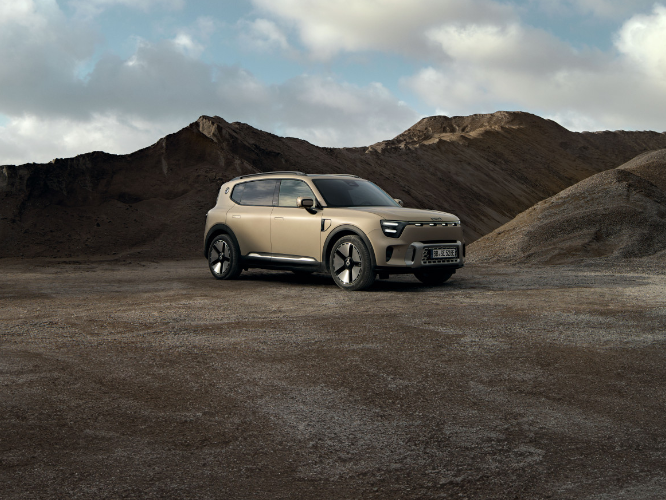Q
What is the difference between Hyundai Kona and Smart #1?
Both the Hyundai Kona and the Smart #1 are electric vehicle models that have attracted significant attention in the Malaysian market recently. However, they have different positioning and technical features. As a well - established electric model from Hyundai, the Kona comes in two versions: the standard and the long - range. Its range is approximately between 305 km and 484 km (WLTP standard), making it a great choice for users who value practicality and brand reliability. Its interior design is more traditional, but it is equipped with a 10.25 - inch digital instrument cluster and a central control screen, supporting Apple CarPlay and Android Auto.
The Smart #1, a brand - new electric vehicle jointly developed by Geely and Mercedes - Benz, is built on the SEA vast platform. It has an approximate range of 440 km (WLTP standard) and focuses on a youthful and intelligent experience. It is equipped with a 12.8 - inch central control screen and advanced driving assistance systems. Its exterior design is more stylish and avant - garde.
In terms of charging efficiency, the Smart #1 supports 150kW fast charging, while the long - range version of the Kona supports 100kW fast charging. Both can reach 80% charge in about 30 minutes. For Malaysian consumers, if you prefer a mature and stable model, the Kona is a good option. If you're after a sense of technology and design, the Smart #1 is more suitable.
It's worth noting that the Malaysian government offers tax incentives for electric vehicles, such as exemptions on import duties and consumption taxes, which lowers the purchase threshold. Consumers can also take into account the local charging infrastructure distribution and their own budget when making a purchase decision.
Special Disclaimer: This content is published by users and does not represent the views or position of PCauto.
Related Q&A
Q
How big is Smart #1?
The Smart #1 is a compact all-electric SUV with a body measuring 4,270 mm in length, 1,822 mm in width, and 1,636 mm in height, along with a wheelbase of 2,750 mm. This size makes it extremely nimble on the urban roads of Malaysia while also offering a decent amount of interior space. Its design combines style and practicality, making it a great fit for young families or urban commuters. The trunk has a capacity of approximately 411 liters, which can be expanded further when the rear seats are folded down to meet the needs of daily shopping or short trips.
As an electric vehicle, the Smart #1 has been performing outstandingly in the Malaysian market. It offers high charging convenience and has sufficient range for daily use. Coupled with its compact body, it's perfect for navigating through busy cities like Kuala Lumpur. Moreover, its intelligent features and driving assistance systems enhance driving safety and convenience. It's an option that combines environmental friendliness and practicality.
Q
How much horsepower does the Smart #1 have?
As a pure - electric SUV, the Smart #1 offers two powertrain versions in the Malaysian market. Among them, the high - performance BRABUS version has a maximum power of 428 horsepower, and it can accelerate from 0 - 100km/h in just 3.9 seconds. The regular rear - wheel - drive version has 272 horsepower, which meets the needs of daily driving. This vehicle is built on Geely's SEA vast platform and is equipped with a 66kWh ternary lithium battery pack. It has a WLTP range of up to 440 kilometers and supports 150kW fast charging. It can charge the battery from 10% to 80% in 30 minutes.
For Malaysian consumers, the intelligent features of the Smart #1 are also quite appealing, including a 12.8 - inch central control screen, an intelligent driving assistance system, and exclusive mobile app control functions. It's worth mentioning that electric vehicles in Malaysia enjoy exemptions from import duties and consumption taxes, which makes electric models like the Smart #1 more price - competitive. Meanwhile, the Malaysian government is actively expanding the charging infrastructure, and the usage environment for electric vehicles will be more convenient in the future.
Users with different driving needs can choose the appropriate version according to their own circumstances. The high - performance version is suitable for users who pursue driving pleasure, while the rear - wheel - drive version is more suitable for urban commuting.
Q
Is Smart #1 electric?
Yes, the Smart #1 is a pure-electric vehicle jointly developed by the Smart brand and Geely Auto. Built on Geely's SEA pure-electric platform, it's specifically designed for urban driving, making it an excellent fit for bustling Malaysian cities like Kuala Lumpur and Penang.
The Smart #1 comes with either a rear-mounted single motor or a dual-motor all-wheel-drive version. It can achieve a range of up to 440 kilometers (WLTP standard) and supports fast charging. It only takes about 30 minutes to charge the battery from 10% to 80%, eliminating the concerns of electric vehicle users about range and charging time.
This car is also equipped with advanced intelligent driving assistance systems such as adaptive cruise control and automatic parking, enhancing driving convenience and safety. For Malaysian consumers, apart from the environmental benefits of electric vehicles, they can also enjoy government incentives like tax breaks. The compact size and nimble handling of the Smart #1 are particularly suitable for the narrow streets and limited parking spaces in Malaysia.
Moreover, as the charging infrastructure in Malaysia continues to improve, the experience of using electric vehicles will be further enhanced. Models like the Smart #1 are expected to become the ideal choice for urban commuting.
Q
How many kWh to charge a Smart #1?
As a pure-electric SUV, the Smart #1 has a battery capacity of 66 kWh (for the NMC ternary lithium battery version). Considering the actual charging efficiency and losses, it usually takes about 70 - 75 kWh of electricity to charge the battery from 0% to 100%. The specific value may vary slightly depending on the charging environment temperature, battery status, and the power of the charging pile. In Malaysia, it takes about 6 - 7 hours to fully charge the vehicle using a common 11 kW AC charging pile. However, if using a 150 kW DC fast charger, it can charge the battery from 10% to 80% in 30 minutes, which is more suitable for long - distance travel needs.
For electric vehicle users, understanding charging efficiency and battery management is equally important. The Smart #1 is equipped with a heat pump air - conditioner and an intelligent temperature control system, which can optimize energy consumption and extend battery life. In Malaysia's hot climate, it is recommended to choose shaded charging or night - time charging to reduce the impact of high temperatures on the battery.
In addition, the Malaysian government is accelerating the expansion of public charging facilities. Users can find charging stations through local operators such as ChargeSini or JomCharge. Reasonably planning trips can further enhance the convenience of using electric vehicles.
Q
How to reset smart #1?
To reset the smart #1, you can usually do it through the "Restore Factory Settings" option in the vehicle's infotainment system or the dashboard menu. The specific steps may vary depending on the model year and configuration. It is recommended to refer to the owner's manual or contact the authorized smart service center in Malaysia for accurate guidance. As an electric vehicle, the system reset of the smart #1 may involve the initialization of in - vehicle software, driving modes, or charging settings. Make sure the vehicle is parked and the battery is fully charged when performing the operation.
In Malaysia, local dealers provide technical support for smart models. If you encounter complex issues such as the system fault light coming on or abnormal performance, it is advisable to schedule a professional inspection promptly to avoid any improper operations that could affect the vehicle's warranty. Additionally, regularly updating the in - vehicle software can enhance the user experience. After some functions are reset, you may need to log in to your account again or configure your personal preferences. Familiarizing yourself with these operations will allow you to drive this stylish electric car more efficiently.
Q
What is the first service of Smart #1?
It is recommended that the first maintenance of the Smart #1 be carried out when the vehicle has traveled 10,000 kilometers or after 12 months (whichever comes first). This mainly includes basic items such as battery system checks, high - voltage component status inspections, tire and braking system checks, and in - vehicle software updates to ensure the normal operation of the core components of the electric vehicle. For Malaysian car owners, since the tropical climate may accelerate the wear and tear of the battery cooling system, it is advisable to pay extra attention to the coolant status and the efficiency of the air - conditioning system.
The maintenance intervals of electric vehicles are generally longer than those of fuel - powered vehicles, but regular inspections are still crucial. For example, the sealing of high - voltage wiring harnesses needs to be well - protected in high - temperature and high - humidity environments. If you often drive on rainy roads, you can check the chassis waterproof performance in advance, which is different from the maintenance logic of fuel - powered vehicles.
The maintenance of the Smart #1 can be completed through authorized service centers. Malaysian users can also use the APP to book the door - to - door pick - up and delivery service, which saves time. The maintenance cost of electric vehicles is usually lower than that of fuel - powered vehicles because there is no need to change the engine oil or spark plugs. However, monitoring the battery health is the key to long - term vehicle use. It is recommended to conduct a in - depth diagnosis every 20,000 kilometers.
Q
Does Smart #1 have ventilated seats?
As an electric vehicle targeting young consumers, the Smart #1 indeed offers ventilated seats in the Malaysian market. However, it's important to note that this configuration usually comes with high - end versions or optional packages. It is recommended that consumers confirm the configuration list of specific models with local dealers before purchasing. The ventilated seat function promotes air circulation through built - in fans, which is especially suitable for the hot and humid climate in Malaysia and can effectively enhance the comfort of long - distance driving. Meanwhile, the vehicle is also equipped with a seat heating function, taking into account different usage scenarios. Some versions of electric vehicles in the same class, such as the Tesla Model Y or the BYD Atto 3, also offer similar configurations, but the implementation methods may vary. Some use a suction - type design to reduce noise. As a product of the cooperation between Geely and Mercedes - Benz, the seat system of the Smart #1 inherits the emphasis on ergonomics of European cars. In addition to the ventilation function, it usually also has multi - way electric adjustment and memory functions. These detailed designs are worthy of the attention of Malaysian consumers with sufficient budgets. After all, in a high - temperature environment, seat comfort can significantly affect the driving experience.
Q
What is the real-world range of the Smart #1?
As a pure-electric SUV, the actual range of the Smart #1 varies depending on factors such as driving conditions, road conditions, and climate. Official data shows that its WLTP range is approximately 440 kilometers. However, in actual use in Malaysia, due to the high temperature and frequent use of air conditioning, the range may slightly decrease to around 400 kilometers. This performance is sufficient for daily commuting and urban driving.
The Smart #1 is equipped with an efficient electric drive system and advanced battery management technology, which can optimize energy consumption. It also supports fast charging, allowing a large amount of electricity to be replenished in a short time, making it very suitable for the urban driving environment in Malaysia.
For Malaysian consumers considering electric vehicles, besides the range, they can also focus on the convenience of charging facilities. The charging network in Malaysia is expanding rapidly, and there are more and more charging stations in major cities and along highways, making the use of electric vehicles more convenient.
In addition, the low maintenance cost and environmental - friendly features of electric vehicles are also advantages worth considering. Especially against the backdrop of the Malaysian government's promotion of green travel policies, choosing an electric vehicle can not only save fuel costs but also reduce carbon emissions, being more friendly to the environment.
Q
What plug type is smart #1?
As a pure-electric SUV, the smart #1 uses a Type 2 (Mennekes) charging port in the Malaysian market. This is the mainstream AC charging standard in Europe and Malaysia, which is compatible with most local public charging piles and home wall-mounted chargers. At the same time, it supports the CCS2 (Combined Charging System) DC fast-charging port, which can meet the need for quick recharging. The charging infrastructure in Malaysia is gradually improving, and Type 2 and CCS2 have become the mainstream configurations. Users can easily find suitable charging stations through local charging networks such as MYEV or ChargeSini. For home charging, it is recommended to install a wall-mounted charging box with a power of over 7kW to optimize the charging efficiency. Also, note that the voltage in Malaysia is 240V single-phase electricity, which meets the charging requirements of Type 2. If you need to travel long distances, you can plan in advance to use DC fast-charging stations with a power of over 50kW along the way. Usually, it only takes 30 minutes to charge the vehicle to 80% of its capacity. There may be compatibility differences among charging piles of different brands. It is recommended to use the charging service providers recommended by the original manufacturer to ensure stability.
Q
How big is the boot on the Smart #1?
As a compact all-electric SUV, the Smart #1 comes with a trunk capacity of 411 liters (VDA standard), which is more than enough to meet the needs of daily shopping or short trips. When the rear seats are folded down, the space can be expanded to 986 liters, offering great flexibility and catering to the occasional need of Malaysian users to transport large items. It's worth mentioning that an electric tailgate comes as standard across all models, enhancing the convenience of use.
In the realm of electric vehicles in the same class, the trunk space of the Smart #1 ranks above average. For example, it's more practical than the Volvo EX30, which has a standard capacity of only 318 liters. In Malaysia's hot and rainy climate, the well - organized layout and anti - slip materials in the Smart #1's trunk are also commendable, making it convenient to place wet rain gear or easily rolling items.
Although the battery pack of an electric vehicle usually takes up some under - chassis space, the Smart #1 still maintains good loading capacity through clever design. This is a plus for Malaysian family users who value practicality.
Latest Q&A
Q
How to change the ambient lighting in a Jaguar F-Pace?
Changing the ambient lighting color in your Jaguar F-Pace is a breeze. First, fire up the vehicle and make sure the infotainment screen is on. Then, head into the main menu and look for the "Vehicle Settings" option. Select "Ambient Lighting" from there, and you'll see a bunch of preset colors to choose from—blues, reds, whites, that sort of thing. Just tap your favorite on the touchscreen, and the system applies it right away. You can also tweak the brightness to fit different driving conditions. If you're a Malaysian owner, it's best to do this at night or in dimly lit areas so you can really see how it looks.
The ambient lighting in the F-Pace isn't just about upping the interior's premium vibe; it lets you set the mood in the cabin to match your personal style. It's a pretty common feature in luxury brands these days—Mercedes and BMW offer similar stuff—but what sets Jaguar apart is how well the lighting pairs with the interior materials. It just makes the whole cabin feel that much more luxurious. If you're really into customizing your in-car lighting, swing by your local Jaguar dealer and ask if there are any extra customization options or upgrade services available.
Q
How to set up cruise control in Jaguar F-PACE?
To set up cruise control in your Jaguar F-Pace, first make sure you’re on a road where it’s safe to use—you’ll need to be going at least 30 km/h. Hit the cruise control button on the left side of the steering wheel (it usually says "CRUISE" or has a speedometer icon), and you’ll see the cruise ready indicator pop up on the dashboard. Next, use the "+" or "-" buttons to set your desired speed, and the system will hold it steady. Need to pause? Just tap the brake or hit "CANCEL". To get back to your set speed, press "RES".
For our Malaysian drivers, a quick heads-up: be extra cautious using this on busy roads or in the rain. Don’t zone out and rely too much on the system—always keep an eye on what’s happening around you. The F-Pace’s standard cruise is solid, but step up to higher trims and you might get Adaptive Cruise Control (ACC), which automatically adjusts your speed to keep a safe gap from the car ahead. Either way, *you’re* still in charge—never take your focus off driving.
Lastly, keep those brakes and tires in check; regular maintenance helps the cruise control work like a charm. If you see any warning lights or the system acts up, swing by an authorized Jaguar service center in Malaysia to get it sorted out. Safe travels!
Q
What's the price of the Jaguar F-Pace?
In Malaysia, the price of the Jaguar F-PACE can vary depending on the trim level, optional extras, and current market promotions. Right now, you're looking at a starting price range of around RM 400,000 to RM 600,000 for a brand-new model. For the most up-to-date figures, it's always best to check in with your local authorized Jaguar dealer.
As Jaguar's luxury SUV offering, the F-PACE doesn't skimp on choice under the hood. You've got efficient Ingenium turbocharged engines for everyday driving, and if you're after a bit more punch with some eco-credentials, there's the potent PHEV plug-in hybrid version too – it really strikes a nice balance between performance and fuel efficiency.
What stands out about this Jag is its elegant design language, a nicely crafted interior, and all the latest tech. The Pivi Pro infotainment system comes as standard, and you get a comprehensive suite of driver assistance features. It's a solid pick for Malaysian buyers who want that blend of luxury and a bit of driving excitement.
On top of that, Jaguar has a pretty well-established after-sales service network in Malaysia. Owners can take advantage of the brand's warranty coverage and maintenance services, which definitely adds peace of mind to the ownership experience.
If the F-PACE has caught your eye, it's worth cross-shopping with other premium SUVs in its class, like the BMW X3 or Mercedes-Benz GLC. That way, you can make a really well-rounded decision before signing on the dotted line.
Q
How many seats is the Jaguar F-PACE equipped with?
The Jaguar F-PACE, a premium midsize SUV, comes standard with a 5-seat layout in a 2+3 configuration, easily handling most families' daily travel needs. The seats strike a nice balance between sporty support and all-day comfort, making them ideal for those long highway stretches or busy city commutes here in Malaysia.
Under the hood, you've got options. There's the efficient four-cylinder turbocharged engine, or if you're craving more punch, the more powerful supercharged six-cylinder. Both pair with an 8-speed automatic transmission that does a solid job balancing eager power delivery with decent fuel economy.
Tech-wise, Jaguar's got you covered with their advanced InControl Touch Pro system, which includes Apple CarPlay and Android Auto – exactly what Malaysian buyers expect these days.
Step inside, and the F-PACE doesn't disappoint on space. That 2,874mm wheelbase translates to generous legroom for rear passengers, while the boot offers a practical 508 litres as standard. Need more? Fold those rear seats down, and you've got a cavernous 1,598 litres to play with – perfect for weekend getaways or those big shopping hauls.
And let's not forget our Malaysian climate. The standard dual-zone climate control helps keep things cool, but if you really want to dial in comfort, you can option up to the four-zone system – a definite plus when the mercury rises.
Sure, rivals like the BMW X3 and Mercedes GLC also offer five seats, but the F-PACE stands out with its distinct British design flair. Plus, that aluminium-intensive body construction gives it a weight advantage, which really shines through in terms of nimble handling – something that makes every drive that little bit more engaging.
Q
What are the differences between the Jaguar E-PACE and F-PACE?
The Jaguar E-Pace and F-Pace are two SUVs under the Jaguar brand, with the main differences lying in their positioning and size. The E-Pace is a compact SUV, boasting a more小巧灵活 (nimble and compact) body that makes it ideal for city driving and squeezing through tight roads. It's powered by a 2.0-liter turbocharged engine, delivering better fuel efficiency – perfect for young families or daily commuters.
The F-Pace, on the other hand, is a mid-size SUV offering significantly more space, especially in the rear seats and boot, making it a great choice for long road trips or users needing extra cargo capacity. It also comes with a wider range of powertrain options, including the punchy 3.0-liter supercharged performance variant.
Both models feature Jaguar's signature luxurious interior design and cutting-edge tech, but the F-Pace leans more towards a premium experience in terms of comfort and driving dynamics.
In the Malaysian market, the E-Pace comes with a relatively lower price tag, making it more accessible for budget-conscious buyers, while the F-Pace caters to those seeking more space and stronger performance. Both SUVs are available with all-wheel drive, which is well-suited to Malaysia's varied road conditions, allowing consumers to choose based on their actual needs. Additionally, Jaguar has a well-established after-sales service network in Malaysia, providing reliable peace of mind for owners.
View MoreRelated News

Smart launches its first PHEV in China, with a pure electric range of 252km and a combined range of 1615km
RobertSep 30, 2025

Smart #5 is coming soon: MINI remains MINI, but Smart is getting bigger and bigger
RobertSep 3, 2025

Smart #5 is expected to go on sale on October 27, with a range of over 700km, and may be introduced!
Kevin WongOct 22, 2024

The biggest smart in history, the brand-new smart elf #5 is now open for pre-order
AshleySep 23, 2024

smart#5 Explains: Mercedes-Benz Design, with a Range of Up to 740km!
Kevin WongSep 4, 2024
View More













 Cars
Cars




Pros
Cons